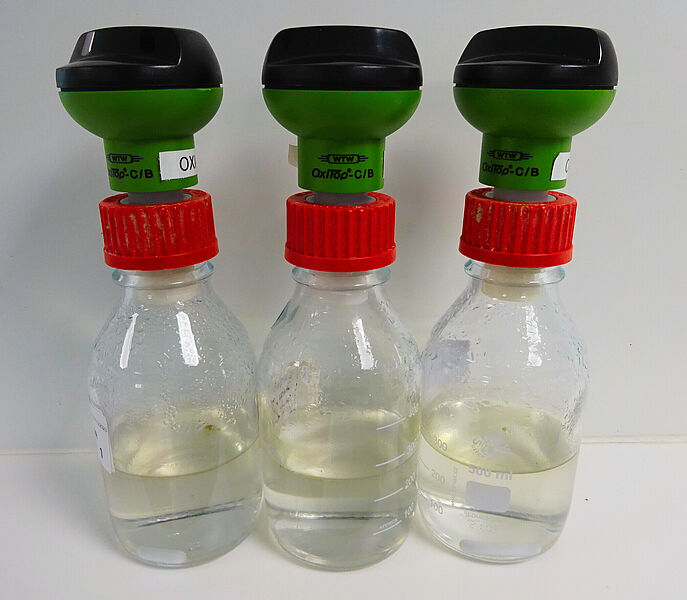What is biodegradation and how does an OECD 301F test work?
Biodegradation (nb. the scientific term is "biodegradability") is defined as the capacity of a molecule to be broken down biologically by living organisms. It is a key characteristic in assessing the environmental impact of chemical substances or cosmetic products. Several methods standardised by the OECD exist to measure biodegradability. The OECD 301F method is the benchmark, offering a precise, standardised approach.

OECD 301F method: an overview
The OECD 301F method is based on the measurement of oxygen consumed by bacteria during the mineralisation of a given substance. Using the OxiTop® device, this method evaluates the variation in pressure in the test flask, providing a precise indication of the amount of oxygen consumed.
Operation and duration of the test according to OECD method 301F
Each sample is tested in triplicate. The flasks, placed in a cabinet thermostated at 20±2°C and under constant magnetic stirring, are observed over a period of 28 days.
In order to determine the biodegradability rate of the substance analysed, the oxygen consumed by the bacteria in each vial, corrected for the oxygen consumed by the negative control, is related to the TOD (Theoretical Oxygen Demand) initially introduced into the vials.
Biodegradability standards
The OECD 301F standard classifies a substance as "readily biodegradable" if its biodegradability rate reaches at least 60% within 10 days of the 28-day test. This classification is crucial for assessing the potential ecological impact of a chemical substance or cosmetic product.
Conclusion: standardised tests for reduced environmental impact
By understanding the importance of biodegradation and using OECD 301F as an analytical tool, industries can not only meet regulatory standards, but also reduce their impact on the environment. The standardisation provided by the OECD 301F method ensures comparable and reliable assessments.
Choose a competent laboratory.
Request your analysis quote now. Free and without obligation! (French form)
I ask for a quote!Your contact
- Frédéric Jeampierre
- +33 7 56 37 24 99
- frederic.jeampierre@wessling.fr




